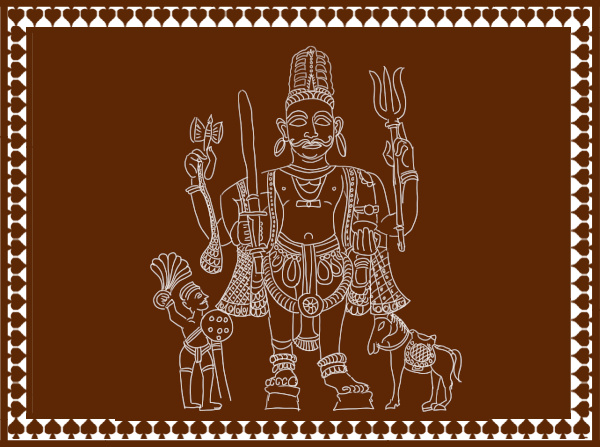
You can’t miss noticing the temple of Ravalnath in villages of Konkan or Goa. Ravalnath’s distinctive presence makes it obvious that he is the principal guardian deity and an important gramdevata of the region.
But who is this god that goes by the name Ravalnath?
Besides the Konkan region and Goa, Ravalnath is rarely visible within the Indian religious landscape. Shrines of Ravalnath are mainly found between Kudal in the Sindhudurg district of Maharashtra, and Goa, and in Belgaon and some parts of Uttar Kannada in Karnataka. There are as many as 49 shrines in Goa. and more than 211 shrines in Sindhudurg District of Maharashtra.
Considering the number of shrines dedicated to Ravalnath in Konkan and Goa, it can be said he is a god of the masses. Ravalnath is primarily a deity associated with the dispensation of justice. The three major shrines of Ravalnath are in Pedne ( Goa) , Chandgadh ( Kolhapur) and Otavane ( Sawantwadi). It is believed that these three shrines work in tandem to dispense justice to their devotees. These three Ravalnaths work like a bench of judges in a court. The belief is, at a time only two Ravalnath-s can dispense justice and give verdict to settle the dispute of its devotees. The third Ravalnath remains silent or rests, so to speak, in local parlance during this period. Once the deity gives the verdict, people follow it with utmost reverence and faith as they fear the deity’s wrath and the destruction that would follow if they disobey. The bond between god Ravanath and the people of Konkan Goa is that of affection but at the same time there is fear and reverence .
It is interesting to note that devotees address Ravalnath by his endearing nickname. In Goa Ravalnath is called ‘Ravalu’ showing affection and fondness to the god. At Marcel he is called ‘Piso Ravalu’ ( insane Ravalu) and ‘Shano Ravalu’ (sane or wise Ravalu). At Asagaon in Sindhudurg, he is called ‘Thoto’ or ‘modko-Ravalnath’ meaning ‘limping god’ ; at Vengurla village he is called as the ‘Bandari-Ravalnath’ meaning, ‘God of ports’. It is said that only when the devotees calls upon Ravalnath using his endearing nickname, the god would respond to their call. In an inscription found at Hoysala he is addressed as ‘Ravaluba’. In some places in Goa he is also referred as ‘Ravaleshwar’. But generally he is known as Ravalnath. Scholars state that the suffix ‘nath’ might have got added to his name due to the influence of the Nath cult in Goa. This peculiar characteristic suggests Ravanath is an indigenous folk deity of the region. Another significant feature of Ravalnath worship that suggests he is a local folk deity is the tradition of ‘tarang’ representation. Tarang is an ancient shamainc folk practice of Konkan and Goa where the deity possesses the body of the priest and becomes an oracle.
There is a curious legend behind the ‘modako- Ravalnath’ or limping god. There are two temples of Ravalnath at Tendoli village at Kudal, and Khanoli village at Vengurla. Both these villages are located in Sindhudurg District of Maharashtra and are separated by a mountain. Once goddess Santeri, originally from Khanoli village crossed over the mountain and settled at Tendoli village. Khanoli Ravanath did not approve of her behaviour and asked Santeri to return to the village but the goddess refused. This enraged Khanoli Ravalnath who tried to attack Tendoli village. A fierce battle broke between the two Ravalnaths. In a rage, Khanoli Ravalnath kicked down the wall of the Tendoli village and it came crashing down with a big thud. But in the bargain, Khanoli Ravanath developed a permanent limp in his leg. Thus, Khanoli god came to be known as ‘thoto’ or ‘modako Ravalanath’ or limping god. Whenever people need any help from him they call him as ‘modakya deva’- “oh! you limping god”.
There are various myths describing the birth of Ravalanth in sthala puranas. Karveer Mahatmya which is part of Padma Purana presents the following tale. According to this tale, sage Ravalnath was born to sage Paugand and his wife Vimlambuja at Badrikeshwara. Goddess Mahalakshmi revealed to Ravalnath the purpose of his incarnation, which is to be the destroyer of demons.
A demon called Kolhasura had become powerful in the Western Ghats as Ratnasura, and another demon Raktabjoha had allied with him. Together they created mayhem in the region.Thus Mahalakshmi wanted Ravalnath to vanquish these demons and bring peace to Western region of Sahyadri. Ravalnath formed his army and made Bhutnath (in some places he is known as Bhairav) his commander in chief. A fierce battle broke out and Ratnasura and Raktabjoha were killed. Thus Ravalnath is worshipped in western region as a guardian or saviour of the people.
In another legend it is said, Ravalnath was born out of the fire ( tapas) which emerged from sage Jamadagni’s body. After Jamadgni asked Parshurama to behead his mother Renuka, he decided to vanquish his rage. He asked his son Parshurama to dissipate the fire of his rage into the ocean, forest, mountains, and other natural elements. Meanwhile, Mahalakshmi was looking for a brave lieutenant to kill Kolhasura. She asked Brahma, Mahesh and Vishnu to help her in the task. The Trinity immediately gathered the fire of Jamadgni’s rage which was distributed among the oceans, rivers, mountains etc and from that fire created Ravalnath.
Some of the stone sculptures found in Goa shows Ravalnath mounted on a horse and accompanied by a dog. This has given rise to speculation among folklorists to categorise him as a pastoral deity like Khandoba. However there is no supporting evidence to clinch this claim. Early icons of Ravalanath found in Konkan and Goa region show him standing or sitting on a horse and by his side is shown his commander Bhutnath accompanying him. Ravalnath is also shown standing in tribhanga posture with four hands. In his right hand he holds a sword, and a water pot in his left hand. In his other hands he holds a damaru or kettle drum, and a trishul. His gaze is straight and focused, and he is shown sporting a prominent mustache. He wears a crown on his head and is dressed in a dhotar or cotton garment with a number of garlands around his neck. Sometimes he is also depicted with a mundamala or a garland of human heads. He is also shown accompanied by one or two women chauri bearers flanking him in attendance. In some villages Ravanath is said to be a brahmachari or bachelor god. While there are some villages in Konkan were they believe Ravanath is married to Pavnai, also known as Bhumka or Santer, and the wedding ceremony of Ravanath and Pavnai is celebrated with great pomp.
Once a fearsome and primary deity of Goa and Konkan region, Ravalnath is slowly fading away as an ancillary god in the council of parivar devata dominated by Puranic divinities in the panchyatan system of Goan temples.
Story Collected by : Vidya Kamat
Source: Socio- cultural History of Goa From Bhoj to Vijaynagar by Dr. V. R. Mitragotri; Ravalnath, lokdeva ek kshetrapal by Prakash Bhau Narkar, Think Maharashtra
Location Maharashtra, Goa
Image Copyright: Vidya Kamat







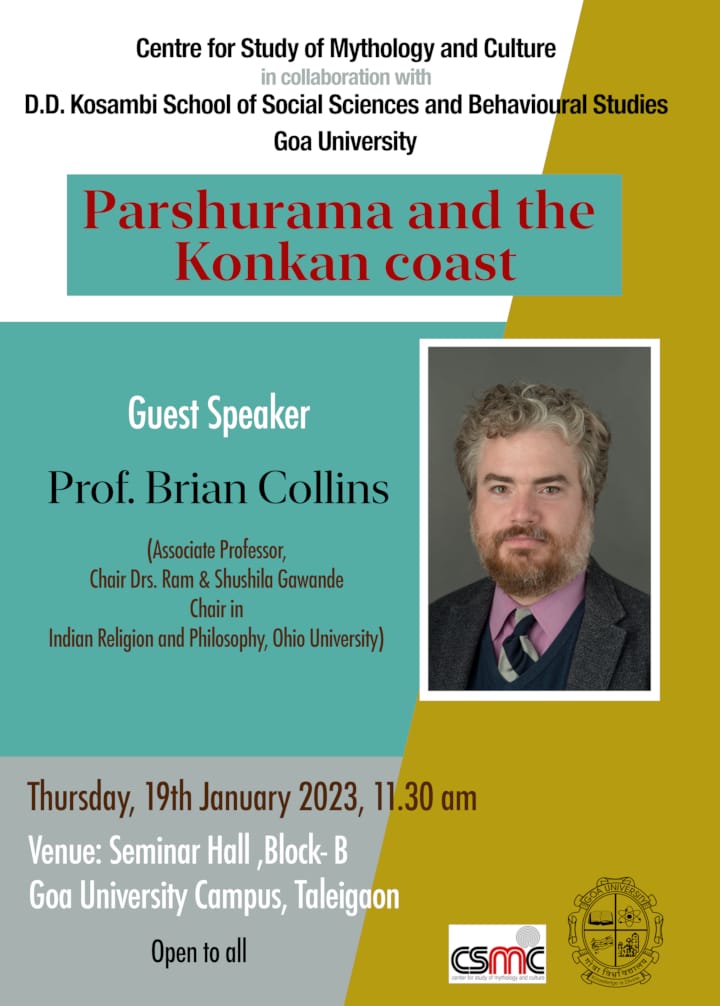
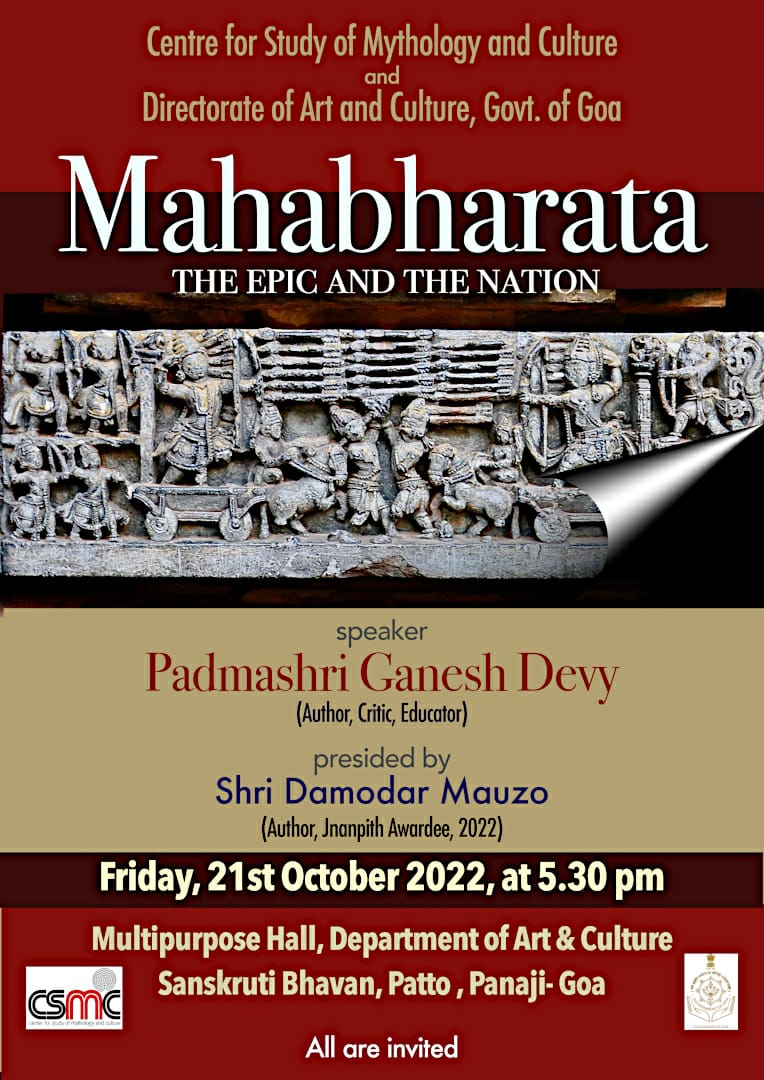
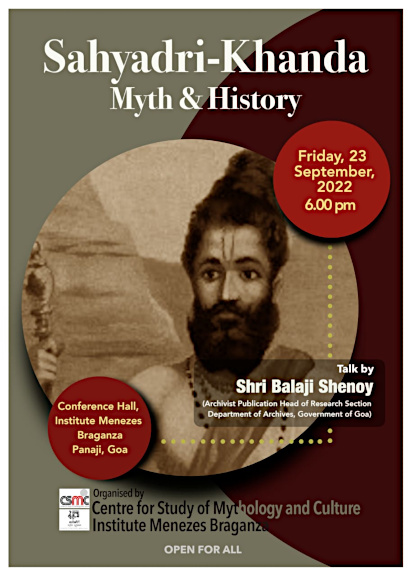
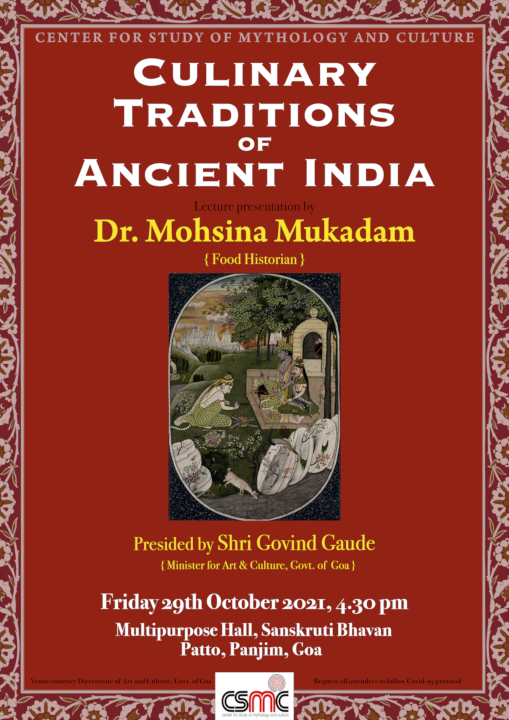

Why are stories from Hinduism a ‘myth’ ? Can we say the same about stories of Jesus and Allah?🤨 is this website funded by Soros and Gang? Or leftists and Atheists ?
Sucheta, Thanks for asking! There are different types of stories such as folktale, legends, fables, fairy tales etc. Myth is a type of story. Myth does not mean false story as popularly understood, but stories that have great significance to a community . Yes Jesus and Allah stories too are categorised as myths.
Ravalnath(Shiva-Chandramouleshwar) In Konkani: रवळनाथ,also known as Roulu,Main Worshipers Are Goan Chari Families, Ravalnath Is Kuldev/Kuladevata Of Origin Vishwakarma Manu Maya Brahmins(chari)
Thanks for your comments
Isn’t Ravalnath and kaal bhairav same ?
In some texts he is equated to Bhairav